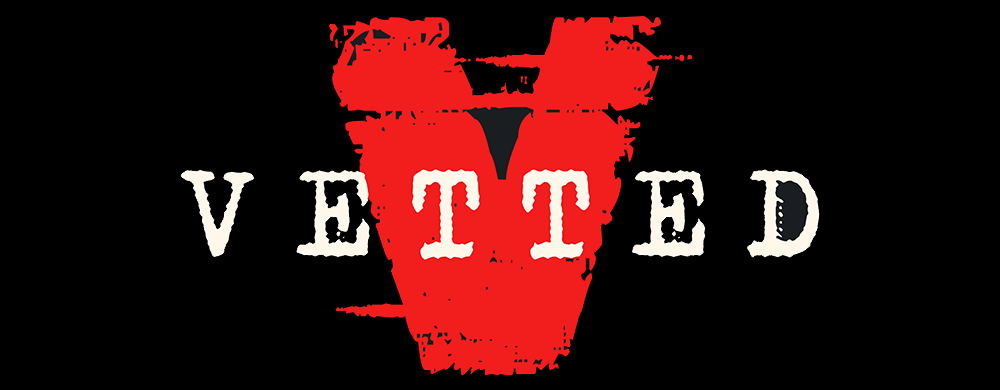Jesse Michels Drops UFO Bombshell
What if a single story could challenge what we think we know about science, government secrets, and even the boundaries of reality itself? Every once in a while, a conversation comes along that feels less like just another UFO story and more like a cultural touchstone—a crossroads for questions we've all secretly asked ourselves. Recently, Jesse Michaels from American Alchemy joined Joe Rogan for a deep dive into one of the most legendary and controversial figures in UFO lore: Bob Lazar. This episode, eagerly unpacked by Patrick from Vetted, reignited debates, inspired anticipation for new documentaries, and—most importantly—encouraged everyone to decide for themselves what they believe.
Who Is Bob Lazar, Really?
To get started, let’s reset the stage for anyone who doesn’t live and breathe flying saucer lore. Bob Lazar skyrocketed (pun intended) into public consciousness in the late 1980s, when he claimed he’d worked on reverse-engineering alien technology at a cloaked facility called S4, just south of the infamous Area 51. His jaw-dropping story included claims of seeing nine alien crafts and tinkering with exotic fuel powered by a yet-undiscovered Element 115. While Lazar instantly became a UFO folk hero—and the inspiration for documentaries and conspiracy forums galore—his story also brought sharp skepticism. Critics have pointed out the lack of verifiable records for his elite academic credentials and claimed employment history at Los Alamos National Laboratory. Was he a whistleblower, or a fabulist with a too-wild-to-ignore narrative?
Patrick’s breakdown is refreshingly balanced, encouraging viewers not to accept or dismiss Lazar at face value but to explore the evidence—and the personalities—around him. He introduces us to filmmaker Luigi Vendetti, whose upcoming documentary promises never-before-seen insights and even an immersive VR experience that lets you (almost) touch the famed sport model UFO. Through these modern retellings and new media, the Lazar story is getting modern legs, and the conversation is as animated as ever.
The Dynamic Between Truth and Disinformation
One of the shining moments from the Rogan-Michaels discussion is their willingness to get into the muddier waters: what happens when fact and intentional deception mix? The connection between Bob Lazar and the late John Lear, himself an influential (and divisive) figure in the UFO community, opens a new layer of intrigue. Lear’s legacy is complicated—part maverick, part ‘useful idiot’ (his own words), and part possible government asset planted to introduce, distort, or leak select information. As the conversation reveals, it’s possible that government agencies used Lazar’s questionable background both to employ him and to discredit him if inconvenient truths ever surfaced. It’s the classic game of plausible deniability, but with intergalactic flair.
A fascinating insight from Jesse Michaels: perhaps the real purpose wasn’t simply to keep secrets but to measure public reaction and manage the story’s fallout. Conspiracy or not, this “limited hangout” approach—leaking just enough information to intrigue or mislead—keeps researchers, debunkers, and believers alike perpetually on their toes.
Powerful New Narratives: The Upcoming Documentary and VR Experience
If you think the Lazar saga ended in the ’80s and ’90s, think again. Patrick’s anticipation for Luigi Vendetti’s documentary, “S4: The Bob Lazar Story,” is palpable. And he isn’t alone. The addition of a VR experience to the documentary is nothing short of game-changing, letting viewers step inside Lazar's claims—literally. The reviews from early testers, including Jeremy Corbell, hint at something truly immersive, blending skepticism and awe as you ‘walk around’ the supposed alien craft. It’s a reminder that belief is not just what you see or hear; it’s sometimes what you feel and experience firsthand.
Cynics will say it’s just good marketing, but these innovative ways of telling the story are reshaping how younger generations engage with one of the 20th (and now 21st) century’s enduring mysteries. More than ever, the lines between documentary, entertainment, and personal exploration are blurring.
The Lazar Debate: Faith, Facts, or Both?
The core takeaway from all this isn’t whether you end up “for” or “against” Lazar. As Patrick so eloquently puts it, the debate doesn’t have to be all-or-nothing. We’re taught to look for binary answers: was he lying or was he a hero? Did he really see extraterrestrial technology, or was he the government’s best red herring? But the truth—if there is one—likely lives in the gray area.
Even the harshest critics admit Lazar was pivotal in bringing terms like Area 51 and S4 into the public lexicon. He forced serious discussions about government transparency, whistleblower protections, and the limits of human invention. If even a fraction of Lazar’s story holds up, he would be one of the most significant whistleblowers in history. That’s why every new interview, every new documentary, keeps pulling us back into the vortex.
Conclusion: The Story Matters More Than the Verdict
Ultimately, what makes the Bob Lazar narrative so enthralling isn’t just whether it’s true—it’s that it encourages us to think for ourselves and ask big questions. As you follow along with these podcasts, documentaries, and VR experiences, remember: don’t let someone else decide for you. Dive into the evidence, examine the motivations and backgrounds of the key players, and keep an open—but critical—mind.
Patrick’s closing message is powerful: storytelling, especially in the unexplained, isn’t about imposing a belief but about giving people space to seek their own answers. No matter what side you’re on, that’s a mission we should all get behind. If you’re fascinated by the unknown—or just want to challenge your own beliefs—the saga of Bob Lazar is a ride you won’t want to miss.
